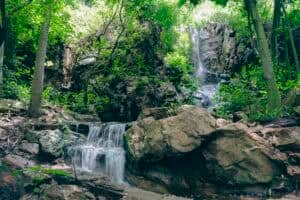Closed beaches, E.coli and sewage leaks have compounded KZN's lack of adequate infrastructure.

Footage of raw sewage flowing from Port Shepstone Hospital into a nearby river has once again put the spotlight on KwaZulu-Natal’s dire water treatment crisis.
Not only are beaches closed, frightening E.coli sample collection results, a damning Blue Drop Report and sewage leaks have compounded the province’s lack of adequate infrastructure.
And the situation appears to grow in intensity every week.
Speaking to The Citizen, University of Free State Centre for Environmental Management Professor Anthony Turton painted a bleak picture of KZN’s water woes, which has been dealt a number of blows over the past two years.
Unable to recover
Turton said the province is “increasingly unable to recover from disaster”, not only due to the scale of disaster, but the “lack of institutional capacity to respond”.
“For example, money allocated to relief is often stolen or misappropriated. Political assassination in the province is high, often associated with tenders or the allocation of money from government.
“[KwaZulu-Natal] was the epicentre of massive looting a year ago, and has not really recovered from that event.”
And to top it off, roads and critical infrastructure including a number of water treatment plants and pipes were damaged in the last season of flooding, and has not yet been repaired.
In a press briefing last week, it was declared that at least R460 million was required to repair pump stations and sewage infrastructure damaged in floods in Durban alone, Berea Mail reported.
National Treasury has reportedly only provided R184 million.
According to eThekwini mayor Mxolisi Kaunda, Johanna Road and Ohlange Sewage pump stations, and the Northern Wastewater Treatment Works were largely responsible for high E.coli readings and water quality concerns.
ALSO READ: Sewage hits the fan in Durban, as flood repair funding remains in limbo
Sewage and disease
Raw effluent regularly flows into rivers across the province, with Democratic Alliance department of Economic Development and Environmental Affairs spokesperson Heinz de Boer reporting “horrendous” pollution at the Umgeni, Palmiet, Amanzimtoti, Umbilo and Tongaat rivers.
Last week, thousands of litres of raw sewage flowed into the Ohlanga River and uMhlanga lagoon, with fears the constant flow of effluent, which created its own channel of wastewater, could contribute to high E.coli readings on uMhlanga Beach, Northglen News reported.
As of 7 October, the Westbrook, Bronze, Umhlanga, Umdloti, Isipingo, Reunion, Pipeline, Toti Main, Warner, Baggies, Winklespruit, Garvies and Ansteys beaches remain closed.
Turton explained that water problems can be divided into two areas – potable water supply and waste water management.
“In both of these, KZN is a poor performing area in terms of the Blue and Green Drop Reporting standard”.
ALSO READ: Msunduzi insists water is safe to drink despite concerns raised in Blue Drop Certification report
The Department of Water and Sanitation’s Blue Drop report found 26.5% of the province’s 260 water treatment plants, which serve an estimated 8.6 million people, were categorised as “critical risk”.
Just 5.5% of the plants are considered large, with the report finding the 73% of small water schemes presenting resource challenges in terms of staff, chemical supplies, and vehicles.
Of these plants, 58% were considered high risk when it came to microbiological and chemical compliance.
“Sixty-eight percent of systems do not comply with microbiological determinands: this indicates microbiological failures which presents a serious health risk to the consumers,” the report warned. In addition, 86% of systems are not chemically compliant, which could mean significant health risks for consumers.
Turton said sewage risks in KZN are associated with hepatitis A, which is a waterborne pathogen.
There are also high levels of antiretroviral medication and antibiotics owed to high levels of TB and HIV, and because medication is only partially metabolised by the body, some of it returns in sewage, he explained.
“This means that we are exposing pathogens in wetlands and aquatic ecosystems to a wide range of drugs. We can expect to see multi-drug resistant pathogens emerging,” Turton warned.
NOW READ: Waste dumped in Umgeni river in KwaZulu-Natal ‘scary’






